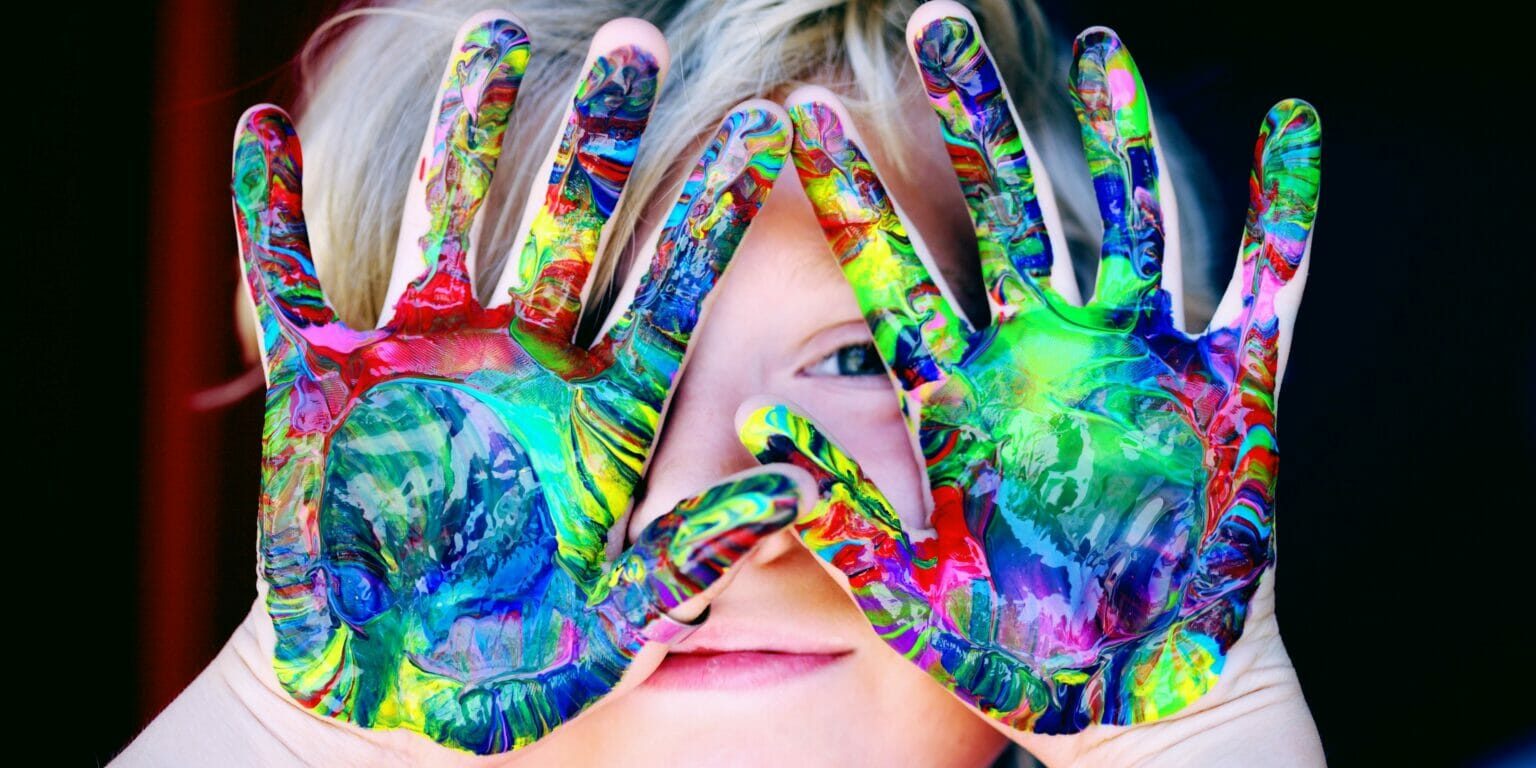Arts & Crafts are often grouped together as a fun, learning experience for children. However, they do NOT mean the same thing. To understand the difference, it is helpful to think of art as open-ended with no clear outcome and the focus is on the process. In contrast, crafts have a goal in mind and are typically teacher- driven. Both arts and crafts offer different learning opportunities.
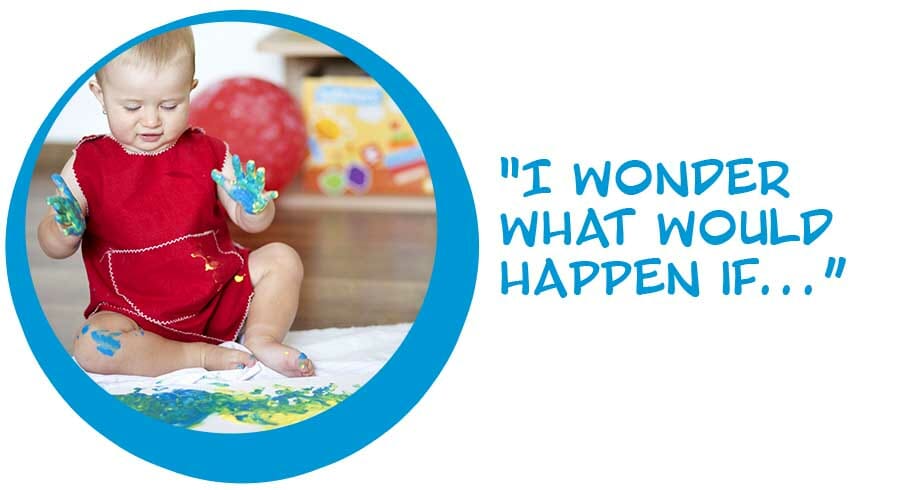

Arts
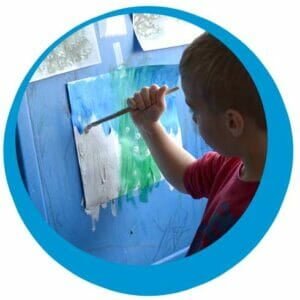

Art provides a creative outlet for children. There is no “right” or “wrong” way to do it. Children can use materials that they choose and want to use. “The goal is the opportunity to try new materials and feel new media; to see what it looks like on the paper and what it feels like when I squish it between my toes.” 1
You may have heard the term “process art” before, this just means that the experience (or process) is the goal. Process art encourages children’s creativity.
How can you provide process art experiences?
Check out these suggestions from NAEYC2:
- Easel painting with a variety of paints and paintbrushes (with no directions)
- Watercolor painting
- Exploring and creating with clay
- Finger painting
- Painting with unusual tools like toothbrushes, paint rollers, potato mashers
- Printing and stamping (stamps purchased or made with sponges)
- Creating spin art using a record player and paint, squirt bottles, paintbrushes, or markers
- Stringing beads independently and creatively
- Weaving cloth, yarn, or paper
- Drawing with pencils, art pens, various sizes of markers, or crayons
- Using homemade doughs
- Making collages using tissue paper, various sizes of paper, glue, paste, glue sticks, scissors, and recycled materials
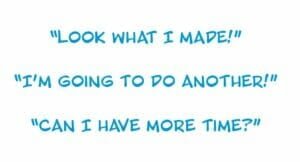

Crafts
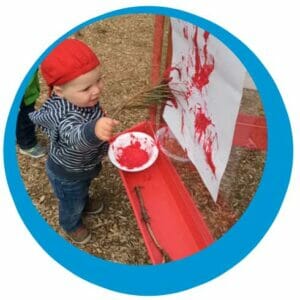

The main distinction between arts and crafts is that crafts have a final goal in mind. Crafts typically have step-by-step instructions with a clear set of directions to follow. The finished product will all look very similar or even the same, and a teacher may often “fix” mistakes.
If the child can’t find his or her project at the end of the day because they all look similar, it is a craft. If someone has to give directions for each step, it is a craft. “While direction following is a good skill to learn, we just don’t want to call that a creative art activity, because it’s a direction-following activity.” 1
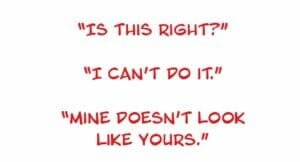



Red paint in the hair? Blue paint on the jeans?
Making art should be fun! It is also typically a messy experience! Read this excerpt from they Ooey Gooey Lady: 3
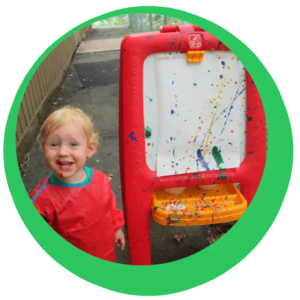

Red paint in the hair? Blue paint on the jeans? Sand in the shoes? Peanut butter on the favorite shirt? White socks that look brown? Sleeves a little bit damp?
Your child probably. . .
- Worked with a friend
- Solved a problem
- Created a masterpiece
- Learned a new skill
- Had a great time
- Developed new language
Your child probably didn’t. . .
- Feel lonely
- Become bored
- Do repetitive “babyish” tasks
- Work on worksheets that are too easy
- Do “sit down” work that isn’t appropriate for their age group
You probably. . .
- Paid good money for the clothes.
- Will have trouble getting the red paint out.
- Are wondering if your caregiver isn’t paying close enough attention to your child.
Your caregiver probably. . .
- Was aware of your child’s needs and interests.
- Spent time planning a challenging activity for the children.
- Encouraged the children to try new things.
- Made smocks available for the children.
- Was worried you might be concerned.
Try to remember your favorite activity when you were four years old. Was it outdoor play with water, mud dress-up clothes? Young children really learn when they are actively involved in play- not when someone is talking to them. There is a difference between “messy” and “lack of supervision.”
The caregiver made sure your child was fed, warm, took a nap, washed hands after toileting and before eating, and planned messy fun things to do because that is how young children learn!
Send your child to school in clothes that can get dirty! Keep extra old clothes at the play site for times when the child gets really wet or messy. If you need to take the child out, bring the dressier clothes when picking up, and allow time to change. Keep calm.
Remember in a few years the teenagers will use the shampoo, mirrors and all the towels! Young children need time to be kids. If you have concerns talk to your child’s caregiver about active play!
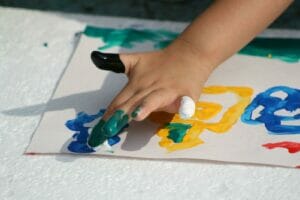
Resources:
1 Baby Picasso: Art with Infants and Toddlers by Natasha Crosby Kile, MS. (June 2018) https://www.continued.com/early-childhood-education/articles/baby-picasso-art-with-infants-22866
2 How Process-Focused Art Experiences Support Preschoolers by Laurel Bongiorno (March 2014) for NAEYC- Teaching Young Children. https://www.naeyc.org/resources/pubs/tyc/feb2014/process-art-experiences
3 Art is not a RECEIPT for Child Care! by Ooey Gooey, Inc. Lisa Murphy, Rochester, NY. http://www.ooeygooey.com/handouts/art.pdf

